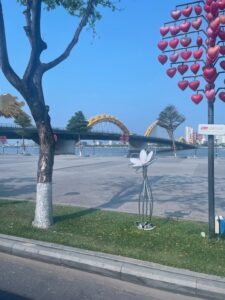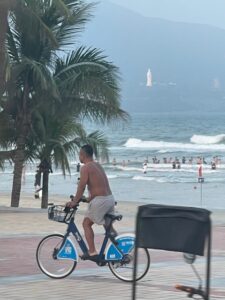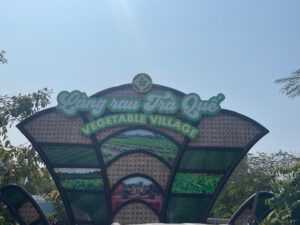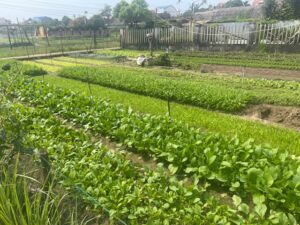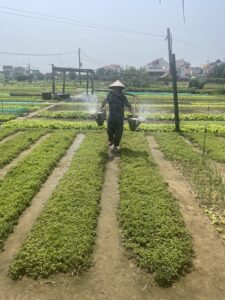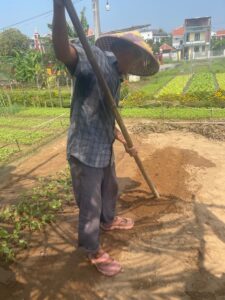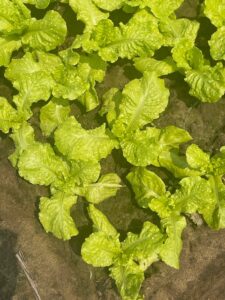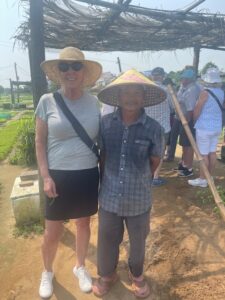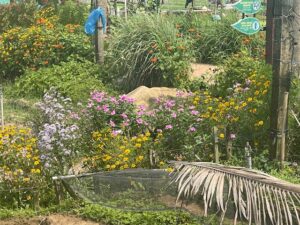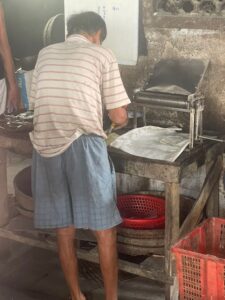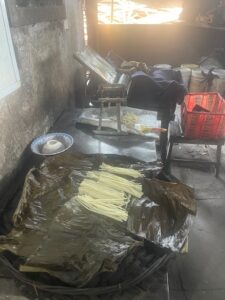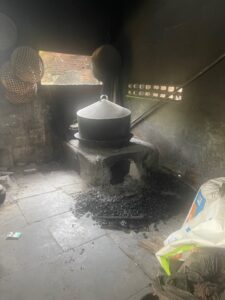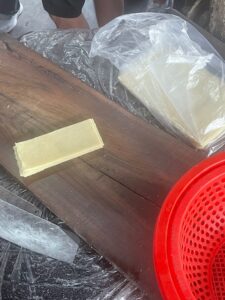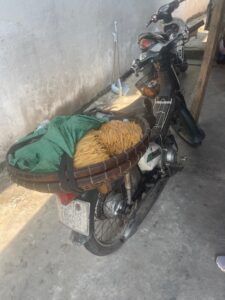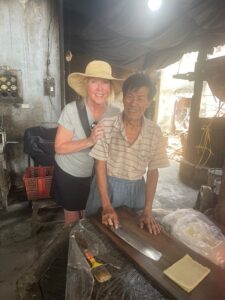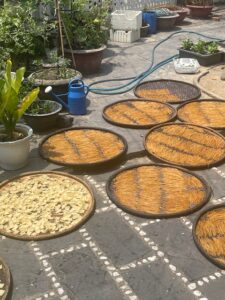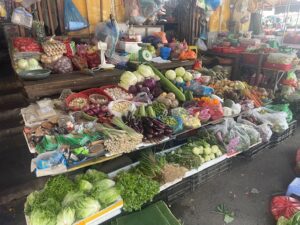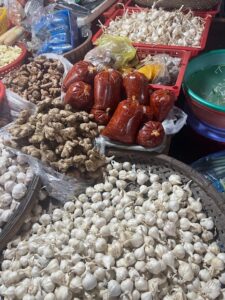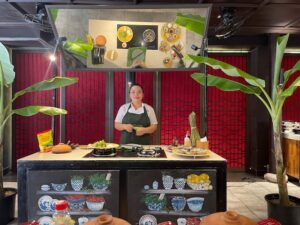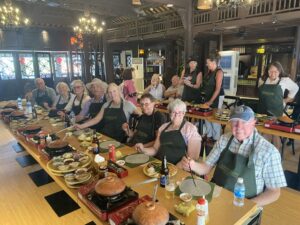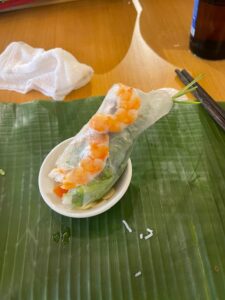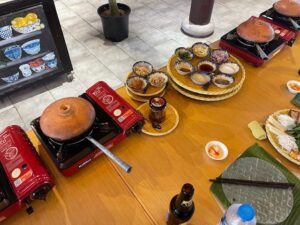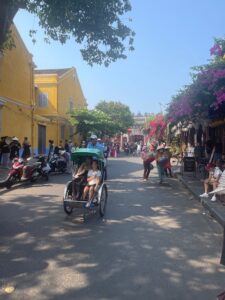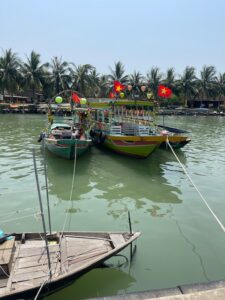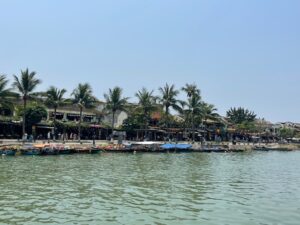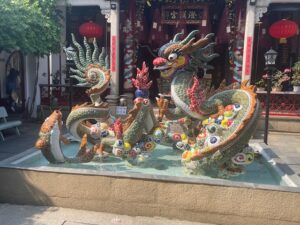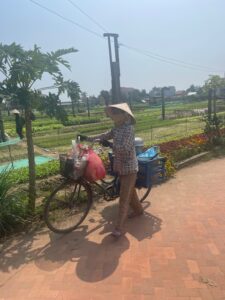
Da Nang is the fifth-largest city in Vietnam by municipal population. It lies on the coast of the East Sea of Vietnam at the mouth of the Han River and is one of Vietnam’s most important port cities. As one of the country’s five direct-controlled municipalities, it falls under the administration of the central government. Da Nang is the commercial and educational center of Central Vietnam and is the largest city in the region. It has a well-sheltered, easily accessible port, and its location on National Route 1 and the North-South Railway makes it a transport hub. It is within 62 miles of several UNESCO World Heritage Sites, including the Imperial City of Hue, the Old Town of Hoi An, and the My Son ruins. The city port used to be a naval base during the Vietnam war and is now home to fishermen and container ship traffic. 1.3 million people live in Da Nang and it’s primarily supported by fishing and tourism.
Our excursion took us through Da Nang City and past the famous Marble Beach. We saw the Dragon Bridge which has six lanes for traffic. It has been open since 2013. The bridge was designed and built in the shape of a dragon and to breathe fire and water each Saturday and Sunday night at 9 pm. We also saw the Lady Buddha the tallest statue Buddha statue in Vietnam. The statue leans on the mountain, facing the sea, the kind eyes looking down, one hand exorcizes while the other hand is holding a bottle of holy water sprinkling peace to the offshore fishermen.
Our first stop was at the Tra Que Vegetable Village, a charming village on the edge of Hoi An named for the sweet vegetables that spice up the everyday meals of the Hoi An people. We took a walk through the herb gardens, as the culture, history and herbal remedies of the many herbs grown here rubbed off on us. Each family has 100 square meters of land to work and over 200 families live and work here.
Our next stop was at a local noodle-maker’s residence. This man wakes at 1:00 am everyday and is able to produce, himself, 420 pounds of rice noodles for local families and restaurants in the area. He showed us how he mixes, makes and cuts the noodles for consumption. His space was quite rudimentary, but very productive.
From there, we visited a local market to learn how local fruits and vegetables grow. We walked the main streets of Hoi An Old Town on our way to Ms Vy’s Market Restaurant. Among the many live food counters in this unique, first-of-its-kind interactive dining venue in Vietnam we could see, smell, hear, taste, touch and interact with many different food preparations. We attended a cooking class where we made spring rolls wrapped in rice paper, egg pancakes, chicken and mango salad from fresh vegetables and herbs.
After our class, we had time to wander the streets of Hoi An and see temples, shops and the oldest house in Hoi An from the 17th century that is home to the same family that originally owned the house centuries ago. It was an incredible day of sights, smells, cooking and dining that we won’t soon forget. For those of you that know me, I enjoy cooking and it will be one of the highlights of our trip, for me. We returned to the ship (late) after a very long day and Joe was the last one off the gangway into the ship. They practically pushed him through the door and slammed it shut after him. Apparently, they are charged by the minute for each one they are late in leaving the dock.
Fun fact: The noodle-maker drinks three liters of sake at the end of his day (afternoon) so he is able to sleep after all his noodle making. One gentleman on the tour tasted his concoction and almost passed out at it’s strength. Talk about a sleep aid!! He was through two and a half liters when we arrived at noon. Yikes!
